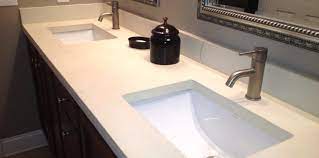A Complete Guide About French Drains & Other Methods

Are you dealing with a damp area in your basement crawl space or a water logging problem in your yard? One solution to this problem can be installing a French drain outside or inside your house.
A good drainage system is essential to keep your house free from water damage. If you have water collecting in your basement, it’s not only an eyesore, but it can also cause the wood to decay. Yes, there are times when a well-designed groundwater management system with gutters, downspouts, extension, proper slope, and positive grading does not perform.
You need a drainage system that removes water from your property’s problem areas and safely redirects it away from your home. French drain installation is the most effective solution to waterproof your basement. Let’s go through the ins and out’s of a French drain.
What is a French Drain?
A French drain is made up of a perforated pipe that is surrounded by gravel or other drainage material. The pipe drains water from the problem area to another location where it will not cause issues.
The gravel or other materials keep the pipe from being blocked by silt and debris. French drains are the most popular methods for managing water because they are simple to construct and easy to maintain.
There are many types of French drains, but they all have the same basic components:
- A perforated pipe that enable water to enter
- Gravel or other drainage material that surrounds the pipe
- A trench that is dug to the desired depth
- A catch basin that is placed at the lowest point in the system
How Does a French Drain Work?
French drains can be divided into two main types: interior and exterior.
It is one of the effective ways to treat severe water logging problems—also an excellent choice for established homes and new builds that are developing issues with water retention.
During an interior French drain installation, a hole is drilled in the foundation wall to allow water to enter the system. A perforated pipe is then placed in the hole and surrounded by gravel. The pipe is then connected to a sump pump, which pumps the water out of the basement and away from home.
An exterior French drain is installed around the perimeter of the problem area. A trench is dug around the house’s foundation, and a perforated pipe is placed in the trench. The pipe is then surrounded by gravel or other drainage material.
The French drain system is connected to a catch basin, which is placed at the lowest point in the system. The catch basin collects the water and redirects it to a different location, such as a dry well, where it will not cause problems.
There is a lot of importance to gutters and drainage as it helps to keep the water away from the house and its foundation.
What Are Their Strengths?
Drains are an efficient technique to address various issues caused by an accumulation of water in your basement.
Excessive water buildup in your basement can lead to serious problems such as Accumulated moisture can wreak havoc on stored objects and appliances located in your basement. It can damage the base of your home, leading to cracks and leaks, causing water seepage, and developing the growth of mold and mildew. It can be pathogenic, leading to health hazards such as respiratory problems and skin infections.
House foundation repair can be expensive if the water damage is extensive. These issues are common in areas with high rainfall or poor drainage. Also, where your house is lower than the surrounding area and water can enter your basement through cracks in the foundation or walls. Interior French drains are an ideal solution for these problems as they redirect the water away from your home before it has a chance to cause damage.
How Do French Drains Compare to Other Methods?
Are you already thinking about installing a French drain, but you’re unsure if it’s the right solution for you? Here is a comparison of French drains with other popular methods of managing water in your basement:
Sump Pumps: Sump pumps are a common solution for managing water in your basement. They are installed in a hole that is dug into the floor of the basement. The pump collects water and pumps it out of the basement, away from home. Sump pumps effectively manage water, but they can be noisy and require electricity to operate.
Gutters and Downspouts: They are a common solution for managing water around the perimeter of your home. Gutters and Downspouts collect rainwater and redirect it away from the house. While gutters and downspouts effectively manage water, they require regular maintenance and cleaning to prevent clogs.
French drains are a more permanent solution for managing water in your basement or around the perimeter of your home. They are installed underground and redirect water away from the house before it has a chance to cause damage. French drains do not require electricity to operate and are virtually maintenance-free.
Basement waterproofing may somewhat alleviate dampness, but it won’t remove extra moisture from the walls behind the paint. So you need to take more drastic action to make your basement habitable and install a French drain.
Conclusion
If your house doesn’t have a French interior drain or a pressure relief system in the basement, and you’re having water damage and accumulated dampness on the walls and floors, it may be a wise decision to get French drain installation done for the sake of protecting your property.




